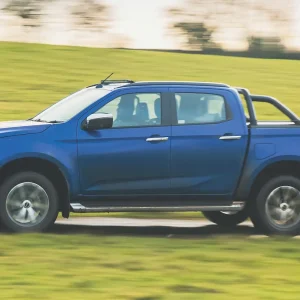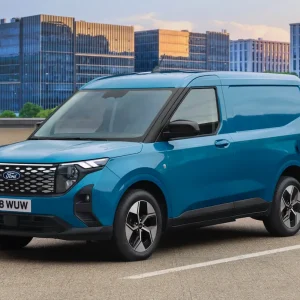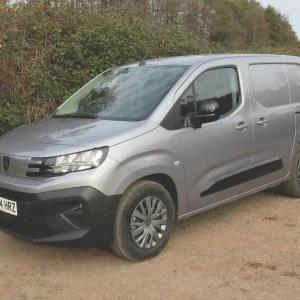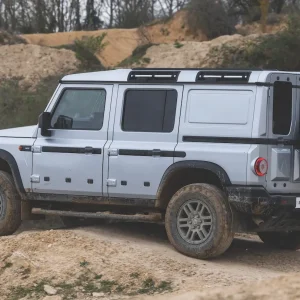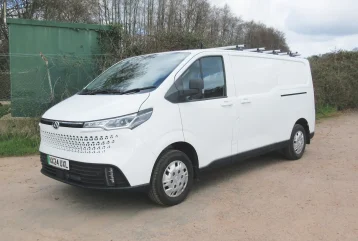
In just a few short years, Chinese manufacturer Maxus has established itself as a player to be reckoned with in the UK light commercial market. Admittedly, it is way behind market-leader Ford and the combined might of the Stellantis brands. Nevertheless, it managed to outsell both Iveco and Stellantis’s Fiat Professional in 2023 in the up to 3.5t sector, despite the fact that both have been established in Britain for far longer than Maxus has.
Owned by SAIC Motor, which also owns MG, Maxus distributes its vehicles in this country through Ireland-based Harris Group. Harris has set up a head office for its UK Maxus activities in Liverpool, and is continuing to expand its already wide range. Unsurprisingly, there is increased stress on battery-electric models.
One of the most recent additions to the line-up, and aiming to challenge models such as Vauxhall’s Vivaro Electric and Ford’s E-Transit Custom, is the eDeliver 7 van.
Offered with two different lengths (L1 and L2) and two different heights (H1 and H2), it is listed with load cubes ranging from 5.9m3 to 8.7m3. Payload capacities run from 1,025kg to 1,200kg.
Two different battery capacities are up for grabs – 77kWh or 88kWh – with a 150kW motor standard on all models.
The exterior and interior styling may not be to everybody’s taste, and we’re not overly-keen on the front grille. One observer remarked that it reminded him of his granny’s old net curtains.
Putting aesthetics to one side, we got to grips with an L2H1 model with the 77kWh pack. Here’s how we fared.
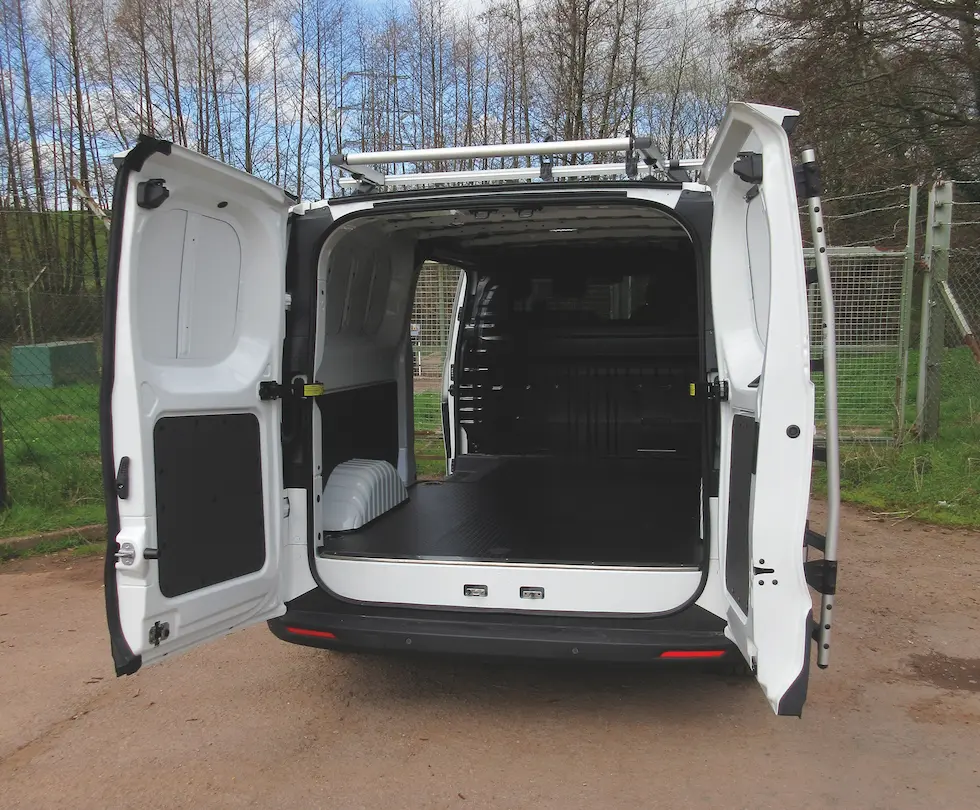
Load bay
Access to the cargo area is by means of a sliding nearside door or through twin rear doors which can be swung through 90 degrees, or through 180 degrees if you liberate the easy-to-release stays.
Eight load tie-down rings are provided, and the cab’s occupants are protected against injury from unsecured cargo sliding forwards by a steel bulkhead topped off by a window. The floor is protected from scratches and scrapes by a tailored rubber mat and plastic panels partially protect the sides and doors, although there is no protection for the wheel boxes, which look vulnerable. It is a bit of a step up into the load area, but at least the side door aperture incorporates a step and a grab handle. The rear door aperture doesn’t, and needs to. A step set into the back bumper wouldn’t come amiss.
At 1,135kg, the van’s gross payload capacity isn’t exactly outstanding for what turns out to be a 3.5-tonner. That’s the penalty you pay for the burden imposed by an electric light commercial’s battery pack.
At 1.5t, its towing capacity is modest too, but better than what is on offer from some of its electric rivals.
We were somewhat concerned about the presence of a ladder mounted on the offside rear door of our demonstrator giving access to the roof bars. Neither the rack nor the bars are standard features.
While an attempt has been made to make the use of the ladder as safe as possible, drivers should nevertheless be discouraged from climbing on top of vans because of the risk of a fall. It should be noted that one of the Health and Safety Executive’s key priorities is the prevention of falls from height in the workplace.
Systems are available which allow ladders for example to be lowered from roof racks and put back again without the driver having to leave the ground. They should be fitted instead.
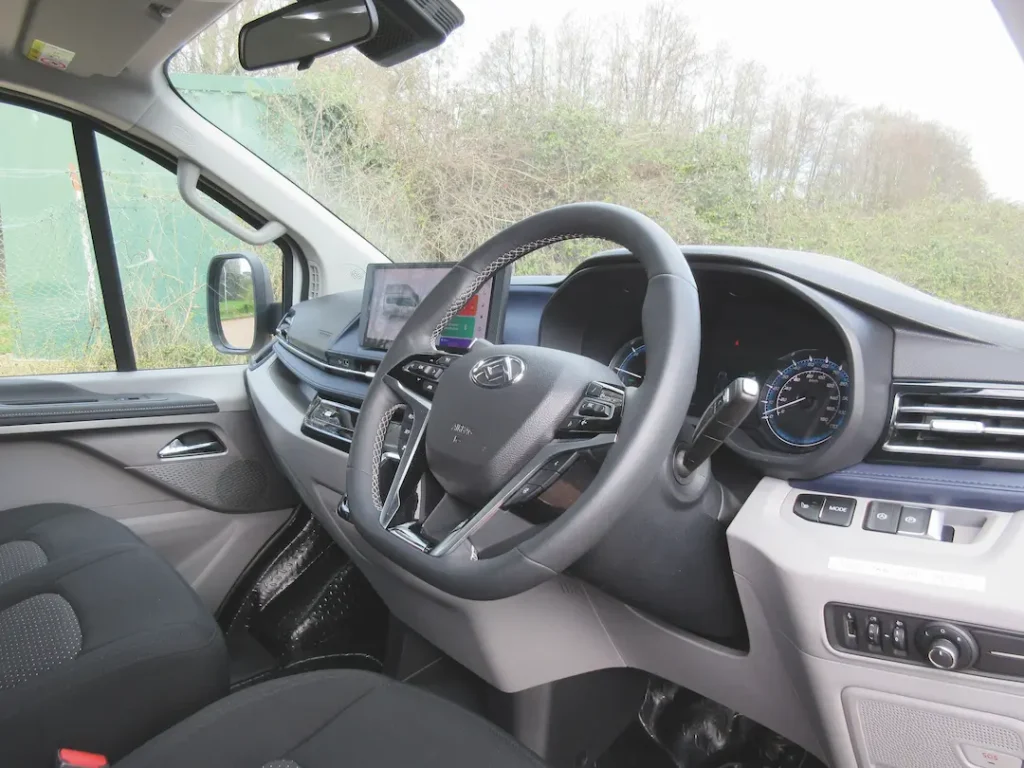
Interior and equipment
The eDeliver 7 is offered with just one level of specification in the UK and it is a fairly comprehensive one.
For your money, you get a heated driver’s seat, a heated steering wheel (both are height-adjustable), air-conditioning, cruise control, front and rear parking sensors and a reversing camera that offers an impressive degree of clarity. It can deliver a bird’s-eye view to ensure that any potential obstacles are spotted and hopefully avoided.
Electric windows, heated and electrically-adjustable exterior mirrors and a heated windscreen are included in the deal too.
A DAB radio is provided, as are Bluetooth connectivity, Apple CarPlay, and Android Auto along with a pair of USB ports and a 12v socket.
Much of what goes on in the three-seater cab is orchestrated by the 12.3in touchscreen, but the heating and ventilation system is controlled by a separate set of user-friendly knurled knobs. As a consequence there is no need to spend ages prodding the screen when all you want to do is turn down the temperature a little.
Maybe we’re too obsessed with internet conspiracy theories, but we weren’t too happy about the presence of a driver-facing camera on the driver’s side A-pillar. Was somebody in distant Beijing keeping an eye on our activities? Were our trips being recorded for future reference?
Absolutely not, insists Maxus. The camera does not make recordings or transmit them, it says, but simply keeps an eye on the driver for signs of fatigue.
If you yawn, then a warning pops up advising you to stop and get a cup of coffee. Channelling our inner child, for a while we kept yawning every few minutes just to make it appear.
That A-pillar ought to feature a grab-handle, incidentally.
In-cab storage systems include three bins in each of the doors, with the middle bin incorporating a moulding which can grasp a flask or a bottle of water. The dashboard incorporates a lidded bin with a shelf above it and you will find a shelf on top of the fascia too.
Pull down the centre section of the middle seat’s back and it turns into a desk with a couple of cup-holders (one or two more elsewhere in the cab wouldn’t come amiss) and an elasticated strap to keep whatever paperwork you have in order. Pull up the middle seat’s cushion and you will find a compartment underneath; somewhere you can hide your smartphone rather than leave it lying around in the cab.
A comprehensive package of safety systems would appear to cover pretty much all eventualities.
An electronic stability programme, electronic brakeforce assist and hill hold control are all installed but that’s only the start. Also doing their bit are blind spot detection, lane change assist, autonomous emergency braking, front collision warning, lane departure warning and lane keep assist, emergency lane keep assist, and automatic cruise control.
Our favourite safety device, however, is rear cross traffic alert, which warns you if you are about to reverse into the path of an oncoming vehicle.
Driver, passenger, side, and curtain airbags are all present and correct. Front fog lights are fitted, the wipers come on automatically when rain spatters the windscreen, and the LED headlights illuminate automatically when it starts to get dark.
Disc brakes are installed all round, and the suspension is independent at the front with MacPherson struts.
Our demonstrator sat on 16in steel wheels graced with plastic trims and shod with Giti GitiVan 600 215/65 R16 C tyres. Their state of health was watched over by a tyre pressure monitoring system, and we were pleased to see that a full-size spare wheel was provided.
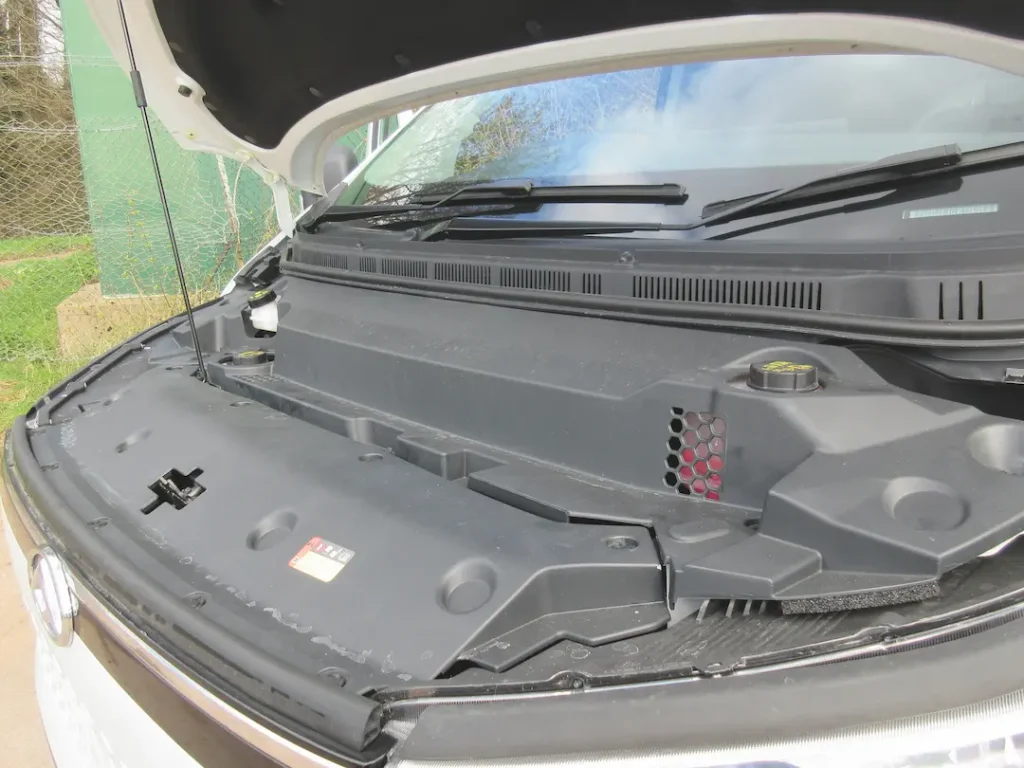
Powertrain
The electric motor delivers up to 330Nm of torque. The battery pack takes eight hours to charge from 5% to 100% of its capacity if you are using an 11kW AC charger says Maxus. Use a 90kW DC charger and you can get from 20% to 80% in 43 minutes, it adds.
You will find the battery charging point beneath a flap next to the door on the passenger side of the cab. Open the door and you can open the flap
Driving
A keyless push-button start is fitted, and a steering column stalk gives you the choice of Drive, Reverse or Neutral. You tap a button on the end to put the van into Park.
A switch on the dashboard allows you to move between three different driving modes. You choose between Eco, Normal and Power.
Eco helps preserve your range but throttles the van’s performance noticeably. Power boosts it considerably, delivering rapid acceleration, but you pay for all that additional punch by seeing the projected range diminish more quickly.
We stuck to Normal most of the time and found it coped well with almost all eventualities given that the load we were carrying weighed no more than 400kg. We only turned to Power when we had to climb a really steep incline, and to Eco when we became a little concerned (probably unnecessarily) that we might run out of range before we reached home base.
The van’s ride is firm, but not uncomfortably so if you’ve got a bit of weight on board, with the suspension capable of coping with most of what Britain’s deteriorating highway surfaces can throw at it.
Run around completely empty, and it gets a lot choppier, but that’s a characteristic of most light commercials.
We had no issues with the handling, happily tackling tight rural bends without having any concern that the eDeliver 7 would suddenly break away. The handling could perhaps stand to be a little sharper but that’s not a major issue.
On the debit side, the in-cab noise levels generated by the tyres and suspension are a lot more noticeable without a diesel engine to mask them. You can barely hear the whirring of the electric motor.
What you can of course hear are the regular warning bings and bongs from the driver assistance systems. While all these alerts are well-meaning, and we know we shouldn’t be ungrateful, they can become irritating after a while.
You get an especially loud beep if you exceed the posted speed limit thanks to the van’s speed limit sign identification system. Unfortunately the eDeliver 7 does not always identify the limit correctly, which causes confusion.
If you want to support your range by pumping more charge into the battery then you can use the onboard regeneration system, which recovers energy that would otherwise be dissipated when the vehicle slows down.
It is accessed using the touchscreen and there are three different levels. We stayed with Level Three, which is the most noticeable when you lift your foot off the accelerator and it cuts in, and the most effective.
A dashboard display show how much power you are consuming, how much is being pumped into the battery pack by regeneration, and how much range you have got left.
Projected range is 190 miles on the combined cycle according to WLTP (Worldwide Harmonised Light Vehicle Test Procedure) figures.
That seems about right to us, but it is a pity that it doesn’t break the 200-mile barrier – and never forget that bitterly-cold weather can drastically reduce the range of most electric light commercials.
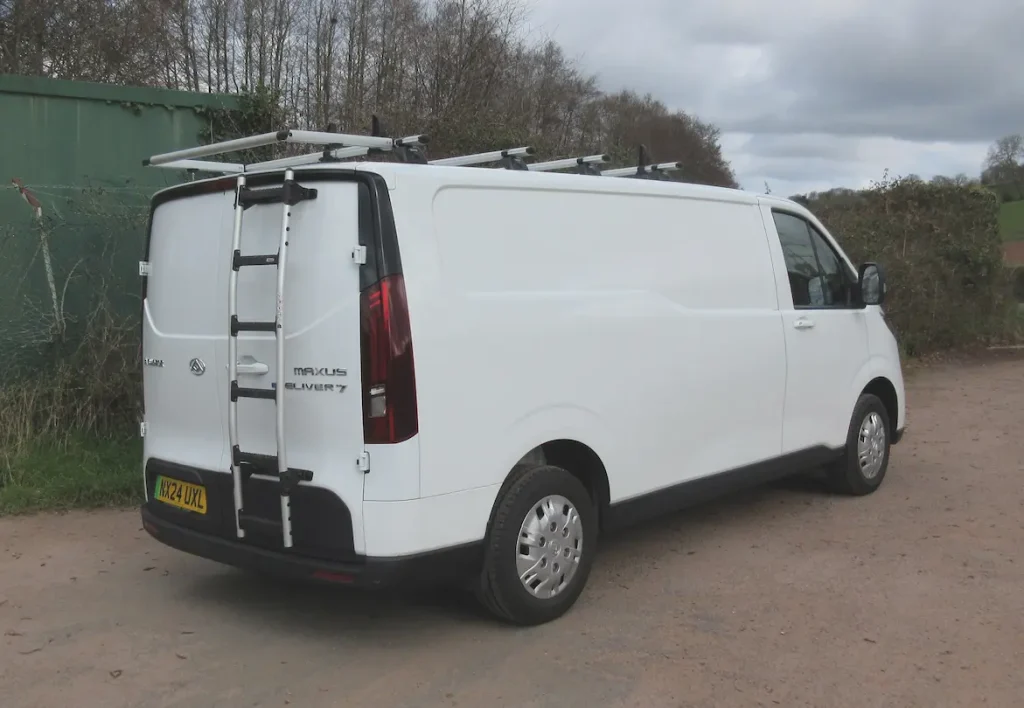
Operating
Service intervals are set at two years/18,000 miles. The warranty lasts for five years/60,000 miles and we’d like to see the mileage limit set higher. That said, the battery is covered for an undoubtedly-impressive eight years/155,000 miles. Shame there are no side rubbing strips to protect the body against minor damage.
The Maxus dealer network has expanded steadily and now boasts 60 locations, including service dealers. We’d like to give a big shout-out to one of the dealerships – Maxus Gloucestershire in Cinderford in the Forest of Dean – for its support in putting together this road test.
| Model | Maxus eDeliver 7 L2H1 77kWh |
| Price (ex VAT and PIVG) | £41,495 |
| Price range (ex VAT and PIVG) | £39,995-£44,995 |
| Gross payload | 1,135kg |
| Load length | 2,913mm |
| Load width (min/max) | 1,390mm/1,800mm |
| Load bay height | 1,328mm |
| Load volume | 6.7m3 |
| Loading height | 660mm |
| Rear door aperture | 1,384mm x 1,245mm |
| Side door aperture | 990mm x 1,200mm |
| Gross vehicle weight | 3,500kg |
| Braked trailer towing weight | 1,500kg |
| Engine size/power | 150kW (201hp) electric motor |
| Torque | 330Nm |
| Gearbox | 1sp |
| Range | 190 miles |
| Battery | 66kWh |
| CO2 | 0g/km |
| Warranty | 5yrs/60,000 miles (battery pack 8yrs/155,000 miles) |
| Service intervals | 2yrs/18,000 miles |
| Insurance group | 9-12 |
| Price as tested | £41,495 |
Rivals
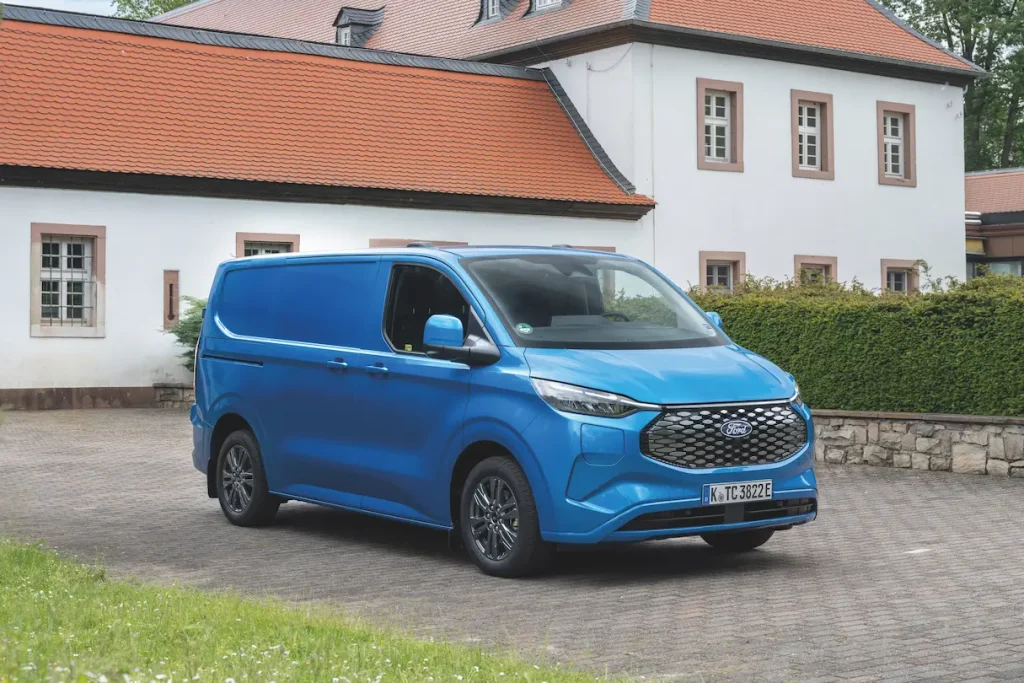
Ford E-Transit Custom
It’s a remarkably pleasant van to drive. It handles well, is highly-manoeuvrable around town, and the ride is top-notch. You get plenty of equipment for your money too, and a well-thought-out cab interior into the bargain.
| Price range (ex VAT and PIVG) | £43,380-£61,190 |
| Load volume | 5.8-6.8m3 |
| Gross payload | 990-1,088kg |
| Electric motor | 100kW (136hp), 160kW (218hp), 210kW (285hp) |
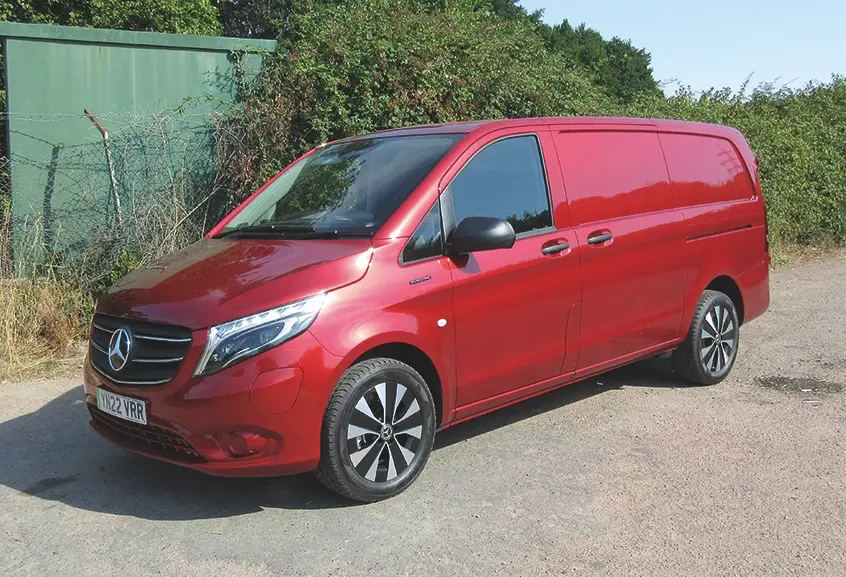
Mercedes-Benz eVito
Payload capacity is meagre, it cannot tow a trailer, with a combined figure of no more than 164 miles the range between recharges is disappointing, and you only get the choice of one battery pack. Nor has Mercedes-Benz as yet abandoned that peculiar parking brake it insists on installing.
| Price range (ex VAT and PIVG) | £48,260-£51,915 |
| Load volume | 6.0-6.6m3 |
| Gross payload | 737-757kg |
| Electric motor | 85kW (114hp) |
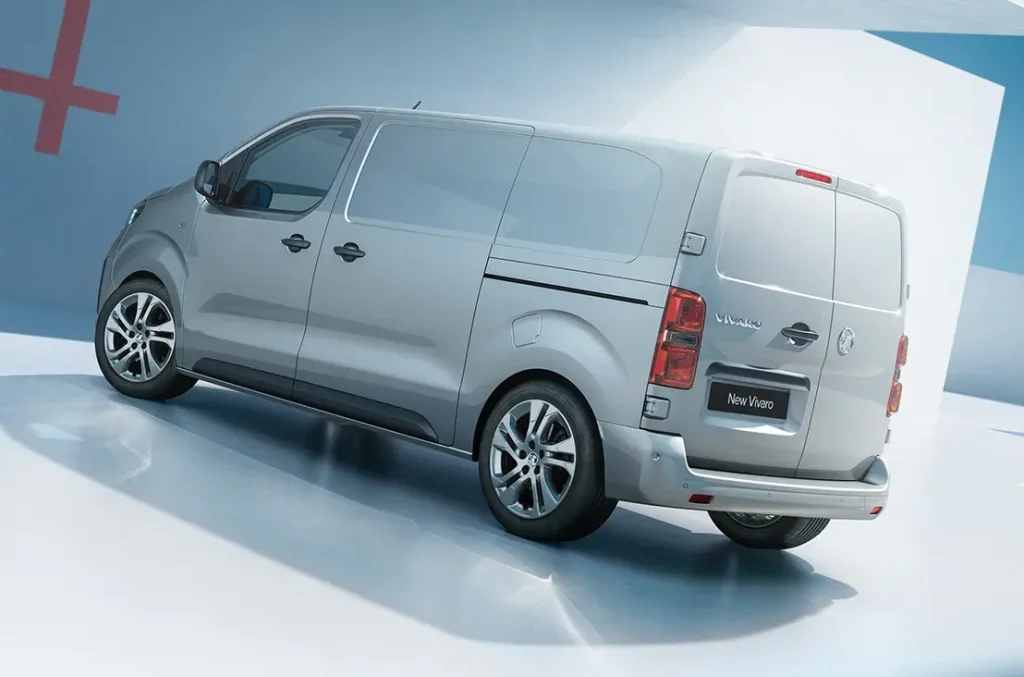
Vauxhall Vivaro Electric
Recently revamped, and with a combined range figure north of 200 miles, the Vivaro Electric can haul a 1t trailer and is sold as a platform cab as well as in van guise. Vauxhall is part of the Stellantis family, and this van mirrors zero-emission versions of Citroen’s Dispatch, Peugeot’s Expert and Fiat Professional’s Scudo.
| Price range (ex VAT and PIVG) | £42,055-£45,530 |
| Load volume | 5.3-6.1m3 |
| Gross payload | 1,001kg |
| Electric motor | 100kW (136hp) |
The Final Verdict
| Design | 7/10 | Looks a little unconventional compared with light commercials from other brands, but should match the requirements of many businesses. |
| Cabin | 8/10 | With a heated seat and steering wheel, AC and no lack of connectivity, it’s not the worst place for a driver to spend the working day. |
| Ride | 7/10 | Copes with most of the defects in Britain’s highway surfaces well, but remove the weight in the back and your progress gets choppier. |
| Refinement | 7/10 | The absence of a diesel engine means that all the other sources of noise – tyres, suspension and so on – gain more prominence. |
| Load area | 7/10 | Covers all the bases, but rear access could be made easier, and payload capacity is modest thanks to the weight of the battery pack. |
| Handling/performance | 8/10 | No real quarrels with either. The Power mode should only be used when it is really necessary, however. |
| Motor/transmission | 7/10 | An efficient package with a regeneration system that is more effective than we expected it to be. |
| Standard equipment | 8/10 | For your money, you get a lot of onboard kit, and the stress on safety can only be applauded. |
| Operating costs | 7/10 | The service schedules seem sensible enough and the level of power consumption looks unlikely to break the bank. |
| What Van? subjective rating | 8/10 | A useful working tool with some undoubted plus-points, and worth considering as an alternative to more familiar brands and models. |
| Overall rating | 8/10 |

